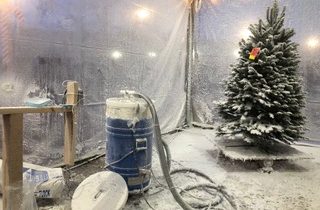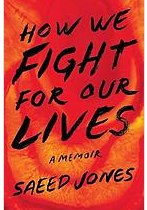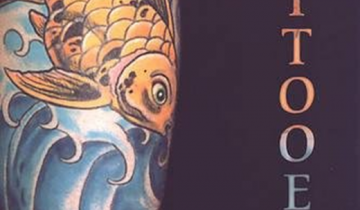Off the Shelf #2: Through the Looking-Glass, or, Adventures in Encyclopedias
by Rob Ridinger
Encyclopedias are a strange breed of literary cats. In library school, one of the emphases in reference training is the identification for each subject area of the basic general resources with which to begin answering any query, whether the source occupies several shelves worth of physical space or is born digital and lives on a server somewhere on the commercial Internet. And, often, once a librarian is settled into his or her professional life, many of these publications are infrequently consulted. This is true even for the Encyclopedia of Library and Information Science, whose background essays and biographical articles present the discipline of librarianship and its approach to specific subjects and social issues both to members of the profession and to readers from the general public.
This encyclopedia began as a project of Marcel Dekker in 1968 and appeared gradually for the next fourteen years with the last volume of the original set completed in 1982. A series of 22 supplements was issued from 1983 to 1997 to either enlarge upon pieces from the original set or add topics not included in the first edition. Two successive editions appeared in 2003 and 2009, and a fourth is due out from CRC Press in October 2015. It thus overlaps with such major events in twentieth-century LGBT history as the Stonewall riots, the rise and morphing of the gay liberation movements, and the beginning of the AIDS pandemic. As the standard reference source where any research on library history would be expected to begin, LGBT people could reasonably expect a somewhat factual acknowledgement of their existence as both professionals and patrons.
Yet, paradoxically, looking to the original set for information on how librarians and librarianship have regarded homosexuality shows an interesting historical picture, one reflecting the attitudes of a pre-Stonewall world. There are no separate articles on homosexuality, gay people or lesbians: the headings where the subject is mentioned are censorship, erotica, male literature, and pornography. Following the page numbers exposes the fact that nearly all the references are to the lengthy article on censorship authored by Jay Daily, while the rest come from the article on erotica, also authored by Daily.
The censorship entry approaches the topic of homosexuality via the medium of literature, specifically by looking at the way successfully published novels pushed the limits of what was considered to be obscene by depicting homosexual feelings and actions previously viewed as unfit for print. Among the works noted are Gore Vidal’s The City and the Pillar, James Purdy’s Eustace Chisholm and the Works, William Burroughs’ Naked Lunch, and James Barr’s Quatrefoil. Daily then recounts his own experiences as a psychiatric social worker during and just after World War II, which included reading through “the literature of male homosexuality as it existed at the time and presented a two-hour summary to a seminar of other military social workers, both male and female …. The summary had drawn no conclusions; it reported areas of agreement, which were few, and continents of disagreement among the authors who had written on the subject.” (Daily, 1970: 359) The article is valuable for tracing the beginnings of what would become LGBT fiction from the days of the Kinsey Report up to the 1960s. A more focused discussion of homosexuality appearing in the article on erotica reflects both the evolution of historical, clinical, and psychological approaches and the recognition of changes at the time of writing. Examples of the latter are references to the establishment of the Mattachine Society and “new organizations such as the Gay Liberation Front.” (Daily, 1972: 173) In light of the subsequent explosion of LGBT writing, the comment that “the literature of homosexuality is neither so vast nor so complicated that it cannot be encompassed by a researcher in some few years of dedicated study“ (Ibid) is a true expression of how limited accurate and available information on the community once was.
Fortunately, two excellent books that explore the dimensions of the intersection of sexuality and librarianship appeared while the final volumes of the first edition of the Encyclopedia were in production. The idea of the first, Libraries, Erotica, Pornography, originated with the late Sanford Berman, Head Cataloger at the Hennepin County Library in Minneapolis. This collection of sixteen chapters was later described as having been assembled “to convince librarians that they could not avoid making decisions about sexuality materials“ (Cornog and Perper, 1996: xii) but does not speak to the role that out-LGBT librarians can play in this dialogue. Five years later, Martha Cornog and her husband produced a sequel, For Sex Education, See Librarian: A Guide to Issues and Resources. The title is based on a formerly used catalog entry reflecting the restricted nature of books on sexuality which were often kept in locked cases accessible only by library staff at a patron’s request. The concept was that patrons could be kept from items that some considered to be morally dangerous.
The second edition of the Encyclopedia appeared in 2003, six years after the last supplement to the original set, and reflected the massive changes in the field with the multiple applications of computer and digital technologies. As the editor stated in the preface, “This edition is a compilation of diverse topics representing the digital world in which we live.” (Encyclopedia of Library and information Science, Second Edition: n.p.) An examination of the index shows that the topic of erotica is completely absent, while the article on censorship focuses on intellectual freedom and obscenity but cites no titles of works dealing with homosexuality.
In contrast that year, the International Encyclopedia of Library and Information Science (no relation to the original Dekker project) issued its second edition that included an article by James Carmichael of the University of North Carolina-Chapel Hill called “Lesbigay Librarians.” The title reflects a short-lived term, described by the author as “a post-modernist portmanteau word“ (Carmichael: 367) in use up to the early years of the twenty-first century before LGBT became generally accepted as the umbrella term for the community and used in indexing and cataloging. Carmichael’s brief essay places the activism of LGBT librarians within American librarianship and society as a whole, ranging from the Israel Fishman’s conception of the GLBT Round Table in 1970 (originally the ALA’s Task Force on Gay Liberation) to controversies over Heather Has Two Mommies and Daddy’s Roommate in the 1990s and the cancellation of the ALA 1996 conference in Cincinnati (OH) after the passage of an antigay ordinance.
When the third edition of the Encyclopedia of Library and Information Science appeared in 2010, the LGBT community as a visible population presenting specific and unique challenges to the library profession had become more recognized. Building upon his 2007 master’s thesis in library and information science on queer students’ information seeking behaviors at UCLA, Patrick Keilty created a survey article entitled “Lesbian, Gay, Bisexual and Transgender Information Needs.” It is particularly valuable to working librarians for its lengthy treatment of the history of LGBT-related research in information studies beginning with familiar titles such as Sanford Berman’s The Joy of Cataloging in 1981 and the groundbreaking collection Gay and Lesbian Library Service edited by Cal Gough and Ellen Greenblatt in 1990 and extending coverage through all major studies done up to 2007. Its conclusion notes:
LGBT information professionals have been at the forefront of LGBT liberation. While there has been a steady increase of LGBT research in information studies, more research is desperately needed, not least because of the importance of information to this particular constituency. The existing, limited research reveals that information is crucial not only to an understanding of oneself, but also to one’s survival into a prejudicial society, however that takes shape. (Keilty, 2010: 3280)
Given that LGBT librarians may be and often are on the front line of accurately educating members of the patron population, as well as our own community and discipline, about our history and how society has and still regards us, knowing the information landscape of the most obvious reference sources on the profession will be an added advantage.
Bibliography:
Barr, James. Quatrefoil. New York: Greenberg, 1950.
Berman, Sanford. The Joy of Cataloging: Essays, Letters, Reviews and Other Explosions. Phoenix: Oryx Press, 1981.
Burroughs, William. Naked Lunch. New York: Grove Press, 1959.
Carmichael, James. “Lesbigay Librarians“ in International Encyclopedia of Library and Information Science, edited by John Feather and Paul Sturges. Second Edition. London and New York: Routledge, 2003: 366-368.
Cornog, Martha and Timothy Perper. For Sex Education, See Librarian: A Guide to Issues and Resources. Westport, Connecticut: Greenwood Press, 1996.
Daily, Jay E. “Censorship, Contemporary and Controversial Aspects of ” in Encyclopedia of Library and Information Science. New York: Marcel Dekker, 1970: 338-381.
Daily, Jay E. “Erotica“ in Encyclopedia of Library and Information Science. New York: Marcel Dekker, 1972: 328-, 164-184.
Encyclopedia of Library and Information Science, edited by Alan Kent and Harold Lancour. New York: Marcel Dekker, 1968-1997. 35 volumes.
Encyclopedia of Library and Information Science, Second Edition, edited by Miriam A. Drake. New York: Marcel Dekker, 2003. 4 volumes.
Encyclopedia of Library and Information Science, Third Edition. Boca Raton, Florida: CRC Press, 2010.
Gay and Lesbian Library Service, edited by Cal Gough and Ellen Greenblatt. Jefferson, N.C.: McFarland, 1990.
International Encyclopedia of Library and Information Science, Second Edition, edited by John Feather and Paul Sturges. London and New York: Routledge, 2003.
Keilty, Patrick. “Lesbian, Gay, Bisexual and Transgender Information Needs“ in Encyclopedia of Library and Information Science, Third Edition. Boca Raton, Florida: CRC Press, 2010: 3275-3280.
Keilty, Patrick. “Queer Students’ Information Seeking at UCLA.” MLIS thesis. University of California, Los Angeles, 2007.
Libraries, Erotica, Pornography, edited by Martha Cornog. Phoenix, Arizona: Oryx Press, 1991.
Newman, Leslea. Heather Has Two Mommies. Boston, Mass: Alyson Publications, 1989.
Purdy, James. Eustace Chisholm and the Works. New York: Farrar Strauss Giroux, 1967.
Vidal, Gore. The City and the Pillar. New York: E.P.Dutton, 1948.
Wilhoite, Michael. Daddy’s Roommate. Boston, Mass: Alyson Wonderland, 1990.
Copyright R. Ridinger 2014.



